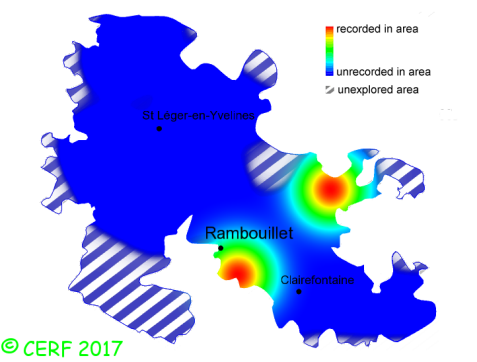common name(s) : Beechwood Sickener
New classification: Basidiomycota/Agaricomycotina/Agaricomycetes/Incertae sedis/Russulales/Russulaceae
Former classification: Basidiomycota/Homobasidiomycetes/Agaricomycetideae/Russulales/Russulaceae
synonyms: Russula nobilis, Russula emetica-mairei
edibility : poisonous
|
|
|
The cap is bright red to carmine red, rose to whitish; its margin is smooth.
The cap surface is smooth, not viscid nor sticky.
The stem is pure white, without ring.
The flesh is white, unchanging; its taste is acrid; the odour is faint, fruity or of coconut for young specimens;
its texture is grainy (breaking like a chalk stick).
The gills are cream, free, crowded .
The spore print is white. This species is mycorrhizal.
It grows on the ground, under broad-leaved trees, on a rather calcareous soil, with beech.
The fruiting period takes place from July to November.
| Dimensions: | width of cap approximately 6 cm (between 2 and 9 cm) |
| | height of stem approximately 4 cm (between 2 and 6 cm) |
| | thickness of stem (at largest section) approximately 13 mm (between 5 and 20 mm) |
Chemical tests : flesh becoming ochraceous (without orange) when in contact with iron sulphate; positive reaction to Ga´ac (rather bright blue); strong purple reaction of cap cystidia to sulpho-vanillin.
Distinctive features : with beech; gills white then pale cream; pink flesh under cap surface; odour of honey when old; tough flesh
Russula mairei is rare and localised in the forest of Rambouillet, and is occasional, more generally speaking
.
|  | | Above : distribution map of Russula mairei in the forest of Rambouillet |
|
page updated on 14/01/18